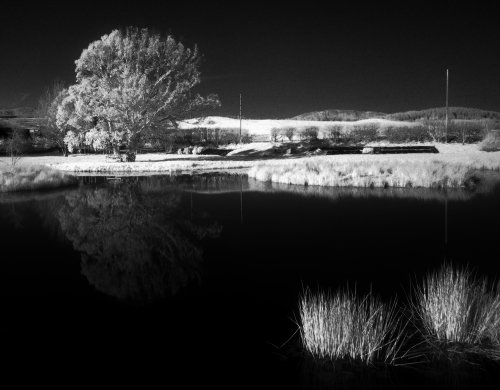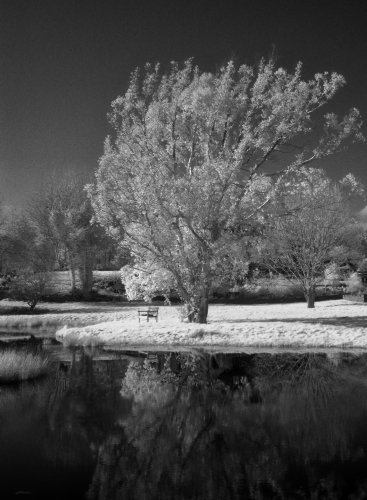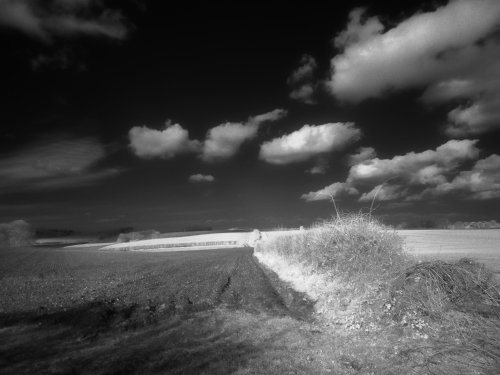As an enthusiastic (if not particularly accomplished) amateur photographer, I have always enjoyed experimenting with different techniques, cameras and effects. I have always found light fascinating, both from a scientific perspective and because of the range of images and effects it can create.
.jpg)
Eucalyptus and vegetable plots reflected in pond. Post-processing done in Luminar 3.
One of the great things about the modern digital camera is that the sensors are, much like most other semiconductor devices, silicon-based. Silicon has a band gap in the near infrared (around 1100 nm or so), which means that it is sensitive to a much broader spectrum of light than the human eye. In a typical digital camera there is a small glass plate covering the sensor which has a highly infrared reflecting coating; without this filter, photographs would come out with a distinctive magenta colour cast caused by the additional red light available to the camera but outside the range at which the human eye can see. Whilst this filter is beneficial under normal circumstances, removing it enables the photographer to take images which use near infrared light. Coupled with an infrared pass filter placed over the lens, and you have a basic infrared camera.
The photographs in this article were taken using a cheap digital pocket camera (Kodak Pixpro with 24-360mm zoom lens) with the infrared filter removed, and with a Neewer 850 nm pass filter held over the lens.
.jpg)
Eucalyptus and bench by pond. Post-processing done in Luminar 3.
Infared photographs are interesting because they show a range of effects which are significantly different from visible light images. Most notably, clear blue sky appears very dark, whilst clouds are unusually bright, leading to some very striking sky effects. Vegetation is also typically quite bright, and can look like snow. Clothing, skin and animals' fur meanwhile tend to appear almost translucent, whilst sunglasses appear totally transparent. These effects are a function of how different materials interact with infrared light. The atmosphere preferentially scatters ultraviolet and blue light, which is why clear sky appears blue and why it looks dark in infrared images. Chlorophyll, the primary photoactive material in plants, absorbs heavily in the red and blue parts of the spectrum, but reflects near infrared (as well as green) light, which is why plants appear bright. Many plant and animal tissues meanwhile are more transmissive to red and infrared light than to shorter wavelengths, making them appear slightly translucent. Don't panic however - infrared light does not make clothing see-through! Ultimately, all of this adds together to give some really interesting and striking effects which can make for great images.
.jpg)
Ploughed field with run-down hedge. Post-processing done in Luminar 3.
Congratulations @elpatito! You have completed the following achievement on the Steem blockchain and have been rewarded with new badge(s) :
You can view your badges on your Steem Board and compare to others on the Steem Ranking
If you no longer want to receive notifications, reply to this comment with the word
STOPVote for @Steemitboard as a witness to get one more award and increased upvotes!